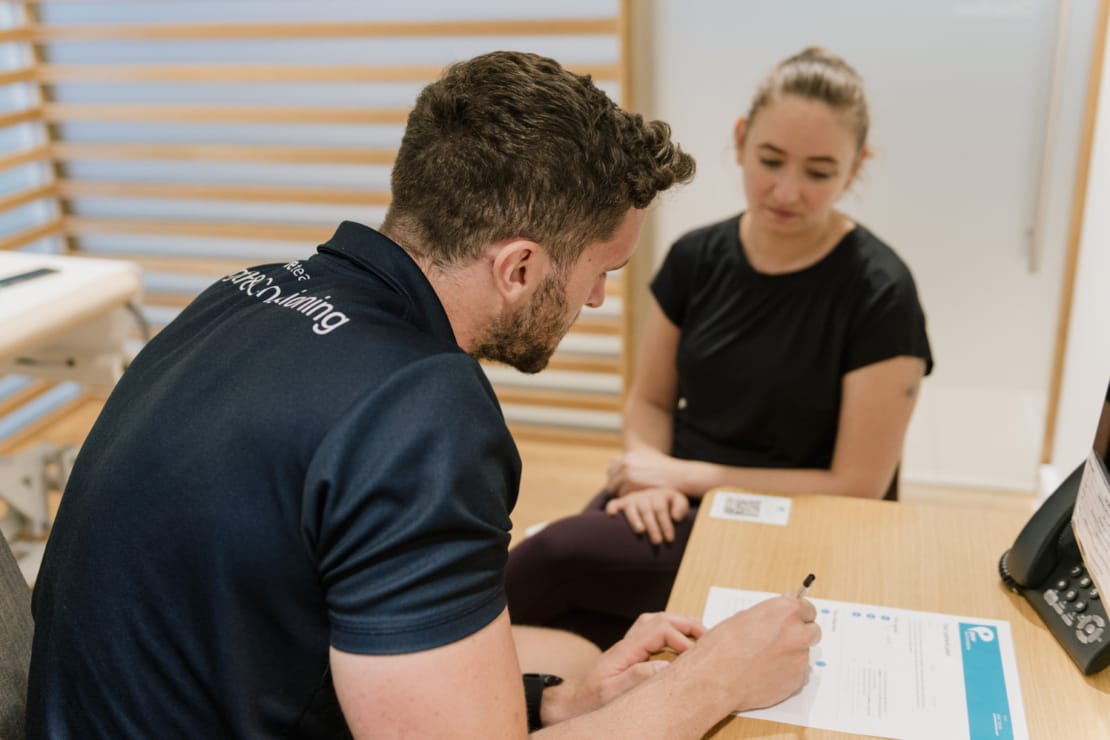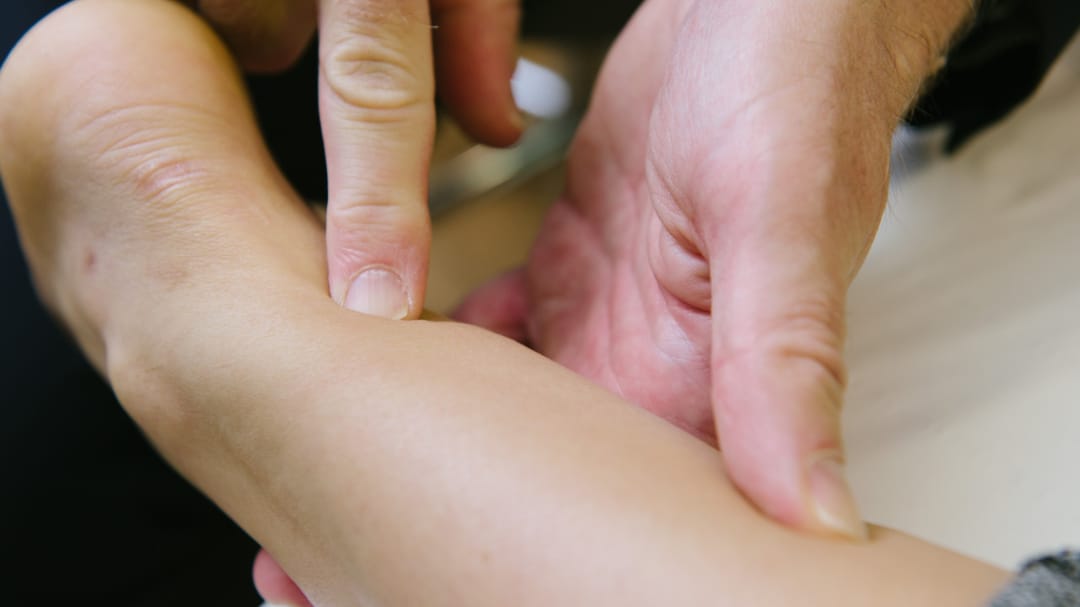Unlocking the Secrets of TMJD: Jaw Pain Relief

Pure Sports Medicine
- 19 September, 2024
- Pain Management
- 4 min read
Temporomandibular Joint Disorder (TMJD) can be a significant source of pain and discomfort, affecting daily activities like talking, eating, and yawning.

What is TMJD?
Temporomandibular Joint Disorder, or TMJD for short, is a condition that affects the temporomandibular joint, which connects your jaw to your skull, and the surrounding muscles. The function of this joint is to allow your jaw to open and close, allowing you to speak, yawn and chew food.
When the muscles around the jaw joint become inflamed or irritated, this can lead to pain, making simple activities such as talking and chewing food difficult. However, TMJD can also cause a range of other symptoms in addition to pain in the jaw, which we will explore later in this blog.
What Causes TMJD?
TMJ is a complex condition with various potential causes such as:
- Muscular Dysfunction: Issues like myofascial pain and bruxism (teeth clenching/grinding).
- Structural Abnormalities: Conditions such as joint derangement and arthritis.
- Psychosocial Factors: Stress and anxiety.
- Trauma: Injuries to the jaw or face.
- Systemic Conditions: Inflammatory diseases.
- Genetic Predisposition: Inherited traits that affect the jaw joint.
Other known risk factors for TMJ include bruxism, malocclusion (misalignment of teeth), and complex or prolonged dental procedures.
What Are The Symptoms?
The signs and symptoms of TMJD vary from individual to individual and in severity, with some people only experiencing mild discomfort, and others debilitating pain.
Whilst the most common symptom is pain around your jaw, there can be other symptoms associated with TMJ disorders. According to the NHS, other possible symptoms include:
- Pain around your jaw, ear and temple
- A headache around your temples
- Difficulty opening your mouth fully
- Clicking, popping or grinding noises when you move your jaw
- A locking sensation in the jaw when you open your mouth
If you think you may have TMJD, it is important to seek advice from a specialist such as a pain consultant, to help you receive an accurate diagnosis and a treatment plan personalised to you.
How Can An Osteopath Help With TMJD?
Osteopaths use various methods to treat TMJ (temporomandibular joint) disorders, aiming to address the underlying cause, ease muscle and tissue tension around the jaw and restore jaw function.
Here’s how they do it:
1. Manual therapy
Osteopaths can use joint mobilisation techniques, for example applying gentle traction and articulation movements to the jaw to help increase its range of motion and reduce stiffness. Osteopaths can also use soft tissue techniques, such as intraoral myofascial release (working on tissues inside the mouth) and buccal massage (massaging the cheek area) which can help to decrease muscle tension and sensitivity.
2. Exercises
Osteopaths can recommend strengthening exercises specifically for the jaw, neck, and upper back muscles, which can provide better support and reduce jaw strain.
In addition to strengthening exercises, stretching exercises may also be recommended. Gentle stretches can improve flexibility and relieve tightness in the jaw, neck, and shoulders, helping to reduce pain and enhance function.
3. Lifestyle Advice
Did you know that stress can be a common trigger for TMJD? Think back to a time where you’ve felt angry or stressed about something. Have you ever clenched your jaw when feeling those emotions? Or perhaps you’ve felt muscles in your body tense up?
Stress can lead to jaw clenching, teeth grinding and muscle tension, all of which can put a strain on the jaw joint. Therefore, it is important to manage your stress levels.
An osteopath can offer stress management techniques such as mindfulness and relaxation exercises, which are crucial, as stress is a major trigger for TMJ problems.
Additionally, an osteopath can provide tips on eating and chewing habits to avoid that contributing to any TMJ discomfort.
4. Posture Advice
Osteopaths can correct poor posture and provide guidance on maintaining good head and shoulder posture to reduce neck strain and excessive jaw pressure. They may also offer ergonomic considerations, so that you can ensure that you set up your workspace effectively and take micro-breaks to support better posture and reduce jaw strain.
Self-Help – Jaw Relaxation Strategies To Try At Home
Jaw relaxation is a simple yet effective way of managing TMJ symptoms. Here are some strategies you can try at home:
1. Unclench Your Jaw
We often clench our jaws without realising it, especially when stressed or anxious. To help relax your jaw:
- Be Mindful: Pay attention to your jaw position throughout the day.
- Tongue Position: Gently place the tip of your tongue behind your upper front teeth (the clucking position) to encourage a relaxed jaw.
2. Place Your Tongue In The Clucking Position
This position helps keep your jaw relaxed:
- How to Do It: Place the tip of your tongue on the roof of your mouth, just behind your front teeth.
- Benefits: This can prevent you from clenching your jaw and helps maintain a relaxed state.
3. Roll Your Shoulders Back And Down
The best posture is your next posture but be mindful of your head position not being to far forward and when those shoulders start creeping up towards your ears, as these can contribute to muscular tension in the neck and jaw. Improving your posture can relieve stress on your jaw:
- Sit or Stand Up Straight: Maintain an upright position but remember to relax those shoulders.
- Shoulder Rolls: Roll your shoulders back and down to open up your chest and reduce tension in your neck and jaw. Repeat as required
4. Take A Deep Breath
Stress and anxiety can exacerbate TMJ symptoms. Deep breathing exercises can help reduce stress:
- Inhale Deeply: Breathe in through your nose, allowing your abdomen to expand.
- Exhale Slowly: Breathe out through your mouth, letting your body relax with each breath.
Jaw pain can have a significant impact on daily tasks and activities from chewing food, to speaking. Thankfully there are various effective strategies to manage and reduce symptoms and pain. Don’t suffer in silence, we’re here to help.

Advice
Over the last 20+ years our experts have helped more than 100,000 patients, but we don’t stop there. We also like to share our knowledge and insight to help people lead healthier lives, and here you will find our extensive library of advice on a variety of topics to help you do the same.
OUR ADVICE HUBS See all Advice Hubs

